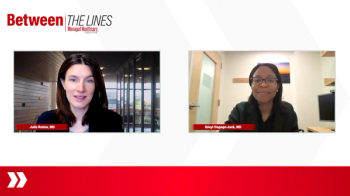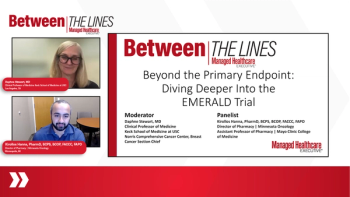Managing Inhibitors in Hemophilia A: Treatment Strategies
Inhibitor development in hemophilia can drastically impact treatment decisions but their burden can be managed.
Jonathan Roberts, MD: Inhibitors in hemophilia are a big deal. In hemophilia A, they happen around 30% of the time, depending on the mutation. Patients that have large gene deletions or mutations that confer essentially little or no protein being made at all have the highest rates of inhibitor development. But basically, that’s an allo-antibody that neutralizes the factor VIII. So if you give factor VIII for treatment, it’s not going to work because the inhibitor is going to neutralize the factor. There are 2 different times in life where it’s the highest rate of inhibitor development. The first is in childhood, usually up to the first 15 to 50 exposure days, but even up to 150 exposure days. So that’s just individual days the [patient has] gotten factor. There can be a risk for inhibitor development. The Medical and Scientific Advisory Council of the National Hemophilia Foundation, which I’m a member of, recommends…annual testing for all patients with hemophilia for inhibitor development. And if it does occur, then that really affects how we treat patients. So as I said, there are nonfactor therapies available that were first indicated for patients with inhibitors and have since been opened up to anyone with hemophilia being on a nonfactor treatment, but basically bypassing the inhibitor by exploiting the coagulation cascade in different ways. So for prophylaxis, that can be through an antibody. And then there are other bypassing agents activated prothrombin complex concentrates or recombinant factor VII therapy that can actually utilize the coagulation cascade to treat a bleeding event if it occurs. And then there’s the process of what we call ITII or immune tolerance induction, where we are giving the patient repetitive exposure to factor VIII. The hope is to induce tolerance so that their inhibitor goes away through repetitive exposure to the immune system. This can be successful 60% to 70% of the time, sometimes higher, sometimes lower. But it certainly requires a drastic change in the management strategy and treatment. And is more of a treatment burden from a patient perspective by far. Inhibitors can also occur in individuals with nonsevere hemophilia, which can be a challenge. I have a few patients who have been mild to moderate hemophilia patients their whole life without an inhibitor. They get an inhibitor, and then all of a sudden they’re learning how to treat themselves as if they are more severe because they are they have a severe bleeding disorder now. So if they live their entire life without developing those infusion skills, it can be a real challenge to then try to get them tolerated.
We don’t know thoroughly how to do that, but we do know that it’s important that an individual with hemophilia get some exposure to factor VIII. Now again, we’re going back to the infant question. Let’s say an infant goes on prophylaxis and they’re only exposed to a nonfactor therapy and they never see factor VIII most of the patients in the population with hemophilia have had early factor VIII exposures. So the question is are we just going to delay the potential unmasking or the presence of one of these allo-antibodies later on in life when eventually they have a surgery or something like that and they get exposed to factor or is giving a patient factor exposure early on when their immune system is developing, is that key to help prevent inhibitors? We don’t know the answers to those questions because again, universally most patients have already been exposed to factor. I think over time, as the current younger population, if they’ve never gotten factor or rarely gotten factor, we’re going to learn more. But unfortunately, there’s not really anything we can easily do to prevent inhibitors. We know how to treat bleeding if they develop. It, but to prevent it is definitely unknown.
Transcript edited for clarity.
Newsletter
Get the latest industry news, event updates, and more from Managed healthcare Executive.






















































